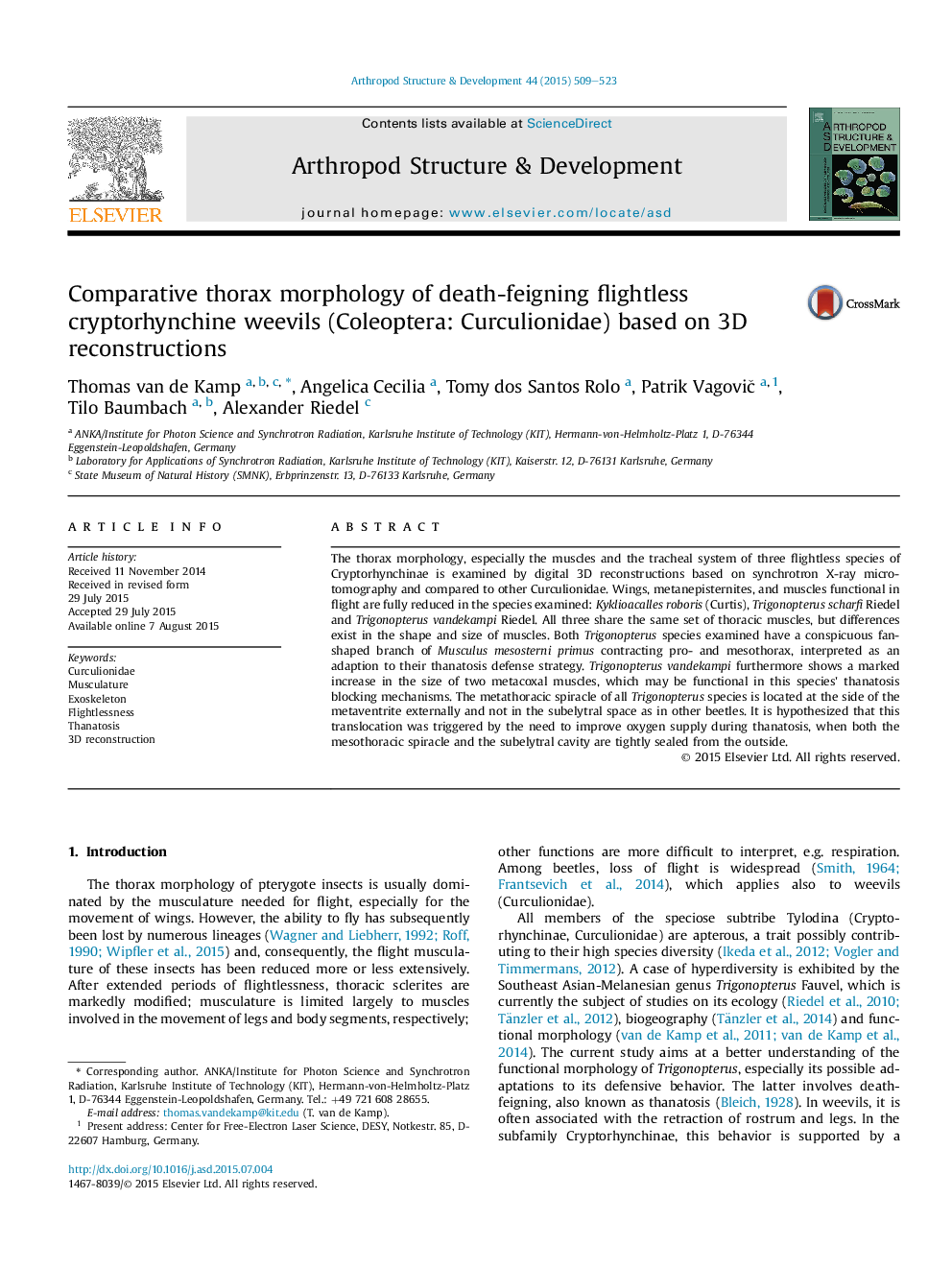| Article ID | Journal | Published Year | Pages | File Type |
|---|---|---|---|---|
| 2778571 | Arthropod Structure & Development | 2015 | 15 Pages |
•We compare the thorax morphology of flightless weevils based on 3D reconstructions.•The thorax morphology is markedly influenced by aptery.•The set of muscles is identical in the species examined, but differences exist in the size and shape of muscles.•A fan-shaped muscle found in the two Trigonopterus species is interpreted as an adaption to the genus' defense strategy.•The mesothoracic spiracle of Trigonopterus species is located externally on the metaventrite and not in the subelytral space.
The thorax morphology, especially the muscles and the tracheal system of three flightless species of Cryptorhynchinae is examined by digital 3D reconstructions based on synchrotron X-ray microtomography and compared to other Curculionidae. Wings, metanepisternites, and muscles functional in flight are fully reduced in the species examined: Kyklioacalles roboris (Curtis), Trigonopterus scharfi Riedel and Trigonopterus vandekampi Riedel. All three share the same set of thoracic muscles, but differences exist in the shape and size of muscles. Both Trigonopterus species examined have a conspicuous fan-shaped branch of Musculus mesosterni primus contracting pro- and mesothorax, interpreted as an adaption to their thanatosis defense strategy. Trigonopterus vandekampi furthermore shows a marked increase in the size of two metacoxal muscles, which may be functional in this species' thanatosis blocking mechanisms. The metathoracic spiracle of all Trigonopterus species is located at the side of the metaventrite externally and not in the subelytral space as in other beetles. It is hypothesized that this translocation was triggered by the need to improve oxygen supply during thanatosis, when both the mesothoracic spiracle and the subelytral cavity are tightly sealed from the outside.
